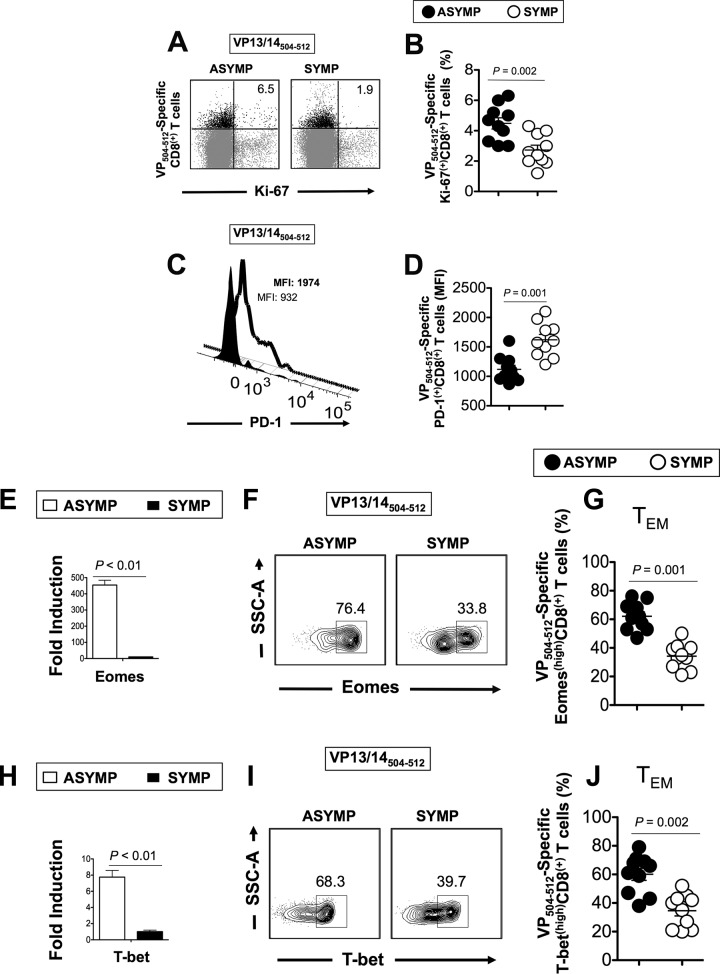FIG 5.
Asymptomatic individuals had a significantly higher proportion of differentiated and functional VP13/14 epitope-specific CD8+ T cells. (A and B) Representative FACS data (A) and average frequencies (B) of VP504–512-specific Ki-67-positive [Ki-67(+)] CD8+ T cells from 10 ASYMP and 10 SYMP individuals. (C) Representative histograms showing the numbers of VP504–512-specific PD-1high CD8+ T cells from one ASYMP individual (closed histogram and nonbold data) and one SYMP individual (open histogram and bold data). (D) Average frequencies of VP504–512-specific PD-1high CD8+ T cells from 10 ASYMP and 10 SYMP individuals. (E and H) The expression patterns of the T-bet (H) and Eomes (E) transcription factors from CD8+ T cells derived from SYMP and ASYMP individuals were analyzed at the RNA level, using RT-PCR. (F and I) Representative FACS data on the percentage of Eomes-positive (F) and T-bet-positive (I) HSV-1 VP13/14504–512-specific CD8+ T cells derived from one SYMP individual and one ASYMP individual. SSC, side scatter. (G and J) Average frequencies of the expression patterns of the Eomes (G) and T-bet (J) transcription factors at the protein level from gated VP13/14504–512-specific CD8+ TEM cells derived from 10 SYMP and 10 ASYMP individuals analyzed by FACS. The results are representative of those from 3 independent experiments. The indicated P values, calculated using an unpaired t test, show statistically significant differences between SYMP and ASYMP individuals.

